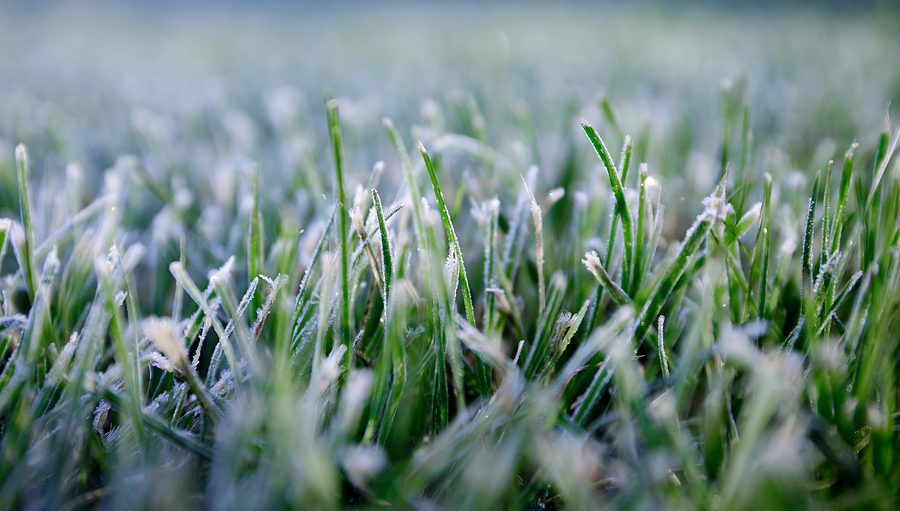How do I Protect My Lawn from Winter Damage?

When the snow finally melts in the spring, it can sometimes uncover lawn that is dead and brown, not just grass that was dormant and is preparing to thrive.
Here are some tips to help you diagnose the causes of winter kill so you know how to respond and how to prevent a large amount of winter lawn damage from:
- Winter Desiccation
- Vole Damage
- Snow Mold
- Crown Hydration
What is Winter Kill?
This chilling expression refers to the cause of damage to your grass and plants in your yard during the winter and refers to all winter lawn damage by which damage or death occurs.
Here in Michigan, where our winters are long and frigid, our grass has plenty homework to do. Violent snowstorms, freezing ice storms, dangerously cold temperatures, moisture-stealing wind and hungry critters all are common elements of winter kill.
What Causes Damage to Lawns in Winter?
The majority of issues that your grass will encounter throughout the winter relate back to one problem – the drop in temps, which leads to and enhances problems such as winter desiccation, vole damage, snow mold and crown hydration.
Winter Desiccation
First on the agenda is winter desiccation. Freezing weather and dry wind causes this awful winter lawn damage.
Without the snow cover, the grass is a victim to the desiccating dry wind. It dries up the water out of the grass; the wind. The roots are unable to take up any water to replace what is lost – the ground is frozen. In the end, that means winters of desiccation, leading to dehydration and death of grass.
How to Avoid Winter Desiccation
It’s easy to prevent because winter desiccation happens due to certain weather conditions. The key point however, is it is only avoidable by improving the health, strength, and resilience of your turf over the course of the year with effective lawn care and diligent maintenance. Keeping your grass strong and healthy through proper lawn care also enables it to withstand environmental stressors, weeds, pests and turf diseases.
Vole Damage
Voles are recognized for causing significant winter lawn damage to turfs. Voles are small rodents, but don’t underestimate their destruction. A starving vole wends its way through your grass beneath a blanket of snow, munching as it goes on your grass. In spring, you will see a neat web of interlacing trails across your grass.
How to Prevent Vole Damage?
A little fall lawn maintenance will keep voles from settling in to your yard.
Get rid of all the leaves and debris on your lawn to remove vole habitat.
Prune tree and shrub low branches to remove ground cover and ensure that you keep mowing your grass right up until the first frost.
And even though it looks bad, vole damage is relatively easy to fix. Grass outside the charred ring of its scruffy skirt will soon green in response to rising temperatures.
Snow Mold
Snow mold is a spring nightmare for homeowners everywhere. This fast-growing fungus grows during mid-winter, hidden beneath the snow. It thrives on unhealthy lawns, sprouting in long, matted grass and excess thatch.
Gray snow mold appears as white or gray mold on wet patches of grass in a circular pattern.
Pink snow mold, in contrast, is of red, pink or copper hue and is highly detrimental to the turf because it attacks the roots and crown.
Pay attention to the first signs of snow mold in early spring; when snow begins to melt.
How to Prevent Snow Mold?
Active year-round prevention is the best control for snow mold. That means in spring, summer and fall, you’ll need to supply your lawn with everything it needs. Fall maintenance is important too.
Keep your grass well trimmed until the first frost to limit matted grass when it snows.
Clear out all the debris and leaves from your turf before the snow starts to fly.
Aerate your lawn in the fall. It not only creates an opportunity to break up the thatch, which happens to be the preferred dwelling of the snow mold, but also aids in drainage, removing the danger of excess water.
Crown Hydration
Crown hydration is one of the most damaging causes of winter kill here in Michigan. Like desiccation, it depends on the winter being extremely dry. As temperatures rise above freezing, your grass awakens and begins to absorb water through its roots. It retains the water in the crown.
So if the temperatures were to drop back below freezing all of a sudden, then we would end up freezing the grass quickly. But all that stored water freezes and expands quickly, causing the cells of the plant to rupture and killing the grass.
How Can You Prevent Crown Hydration?
Consistent lawn care year-round can help prevent crown hydration. Regular feeding, pest control, meticulous weed management and good health will help your grass toughen-up and weather the seasons. This winter your grass will be hardy enough to take on the rigors of winter.
How to Fix Winter Damage
The choice is yours, depending on how bad of shape your lawn is in:
- Aeration and Seeding: In most cases your grass can be revived. Aerating your turf helps break up soil thatch, allowing nutrients, water and air access to the roots, while overseeding helps fill in bare patches where dies off.
- Re-sod your Turf: If the damage is extensive, you may need to remove all of the affected grass and replace it with new sod.
Either way, we suggest contacting a local lawn care business such as us R & S Landscaping. With 30 years’ experience, we are the go to Albuquerque lawn care experts you can count on to help you decide on the best course for your turf with assessments, soil tests and lawn care recommendations tailored to your needs.
